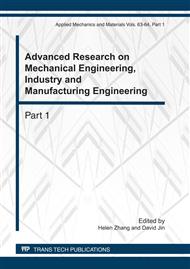p.507
p.511
p.515
p.519
p.523
p.528
p.533
p.537
p.541
Research on 2-D SDCT Performance Based on Transform Basic Matrix
Abstract:
Now, 2-D DCT has been used widely. But the 2-D DCT is operated by two-time1-D DCT successively, which can’t embody the space characteristic of 2-D transform well. To overcome such drawbacks, the paper proposed 2-D SDCT operation method. Firstly, some matrix operation principles are defined. Then, the transform basic matrix used for SDCT operation was build and the operation principle of SDCT is described in detail. Finally, the performance of 2-D SDCT was described systematically. The theoretical analysis shows that the proposed method makes 2-D DCT succinct to express, easy to comprehend and convenient to operate.
Info:
Periodical:
Pages:
523-527
Citation:
Online since:
June 2011
Authors:
Keywords:
Price:
Сopyright:
© 2011 Trans Tech Publications Ltd. All Rights Reserved
Share:
Citation:


